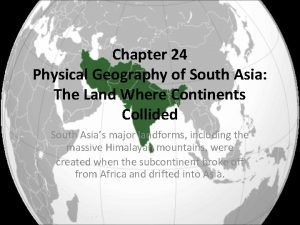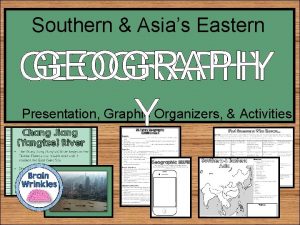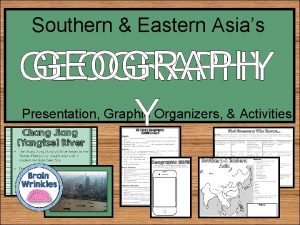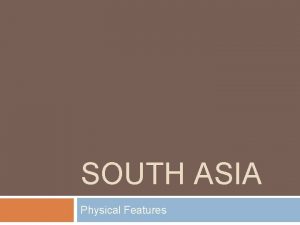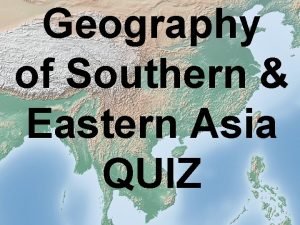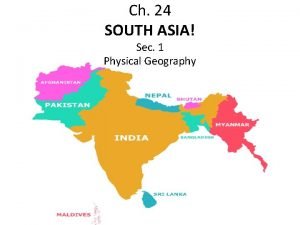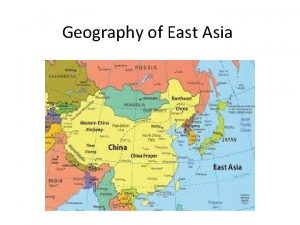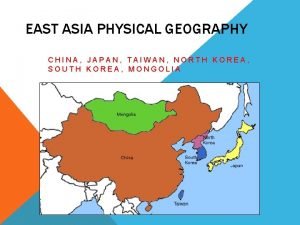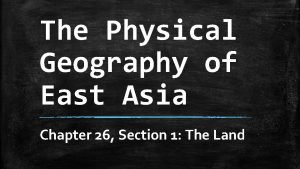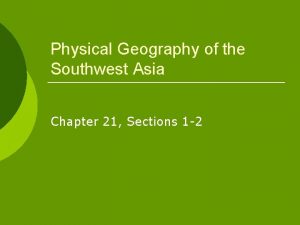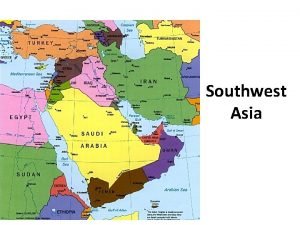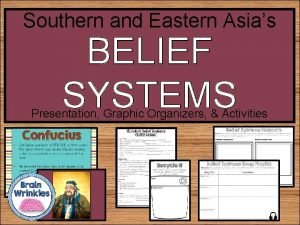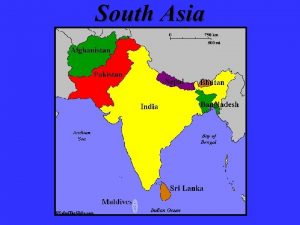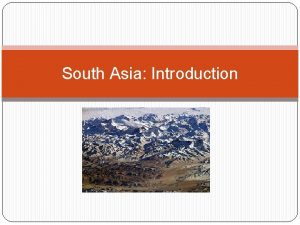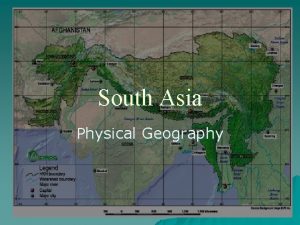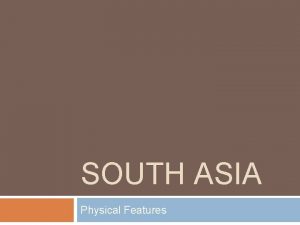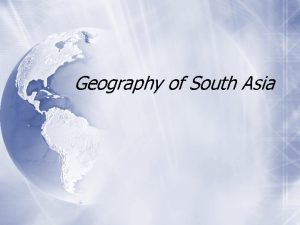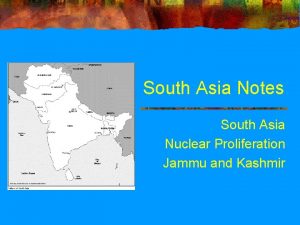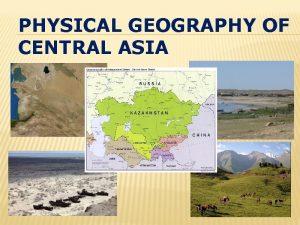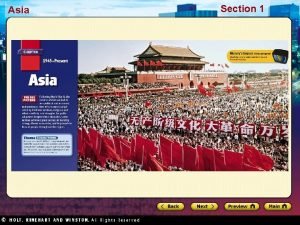South Asia Notes Physical Geography Cultural Geography South



















- Slides: 19

South Asia Notes Physical Geography Cultural Geography South Asia Today Used with permission from Mr. Remmell

Physical Geography The Land Climate and Vegetation

The Land • South Asia consists of a large peninsula with an island near its southern tips. The peninsula is also know as a subcontinent, a large landmass smaller than a continent • South Asia is bordered by the Himalayas in the north, the Arabian Sea on the west, the Indian Ocean on the south, and the Bay of Bengal on the east

The Land • Most of the region’s people live on the northern plains, an agriculturally rich area • South Asia has three great river systems and the world’s largest alluvial plain

The Land • South Asia has few significant oil reserves, but some natural gas, coal, and uranium. The region also has a number of substantial mineral deposits, including iron ore and mica

Climate and Vegetation • South Asia has highland, desert, steppe, and tropical climates • The monsoon is a seasonal change in wind directions that brings heavy rains to much of South Asia

Climate and Vegetation • South Asia’s vegetation is affected by altitude, rainfall, and human activity • South Asia was once largely covered by forests. Today only a small portion of the land is forested

Cultural Geography Population Patterns History and Government Culture and Lifestyles

Population Patterns • South Asia is an ethnically diverse area • Population density is greatest on the Indo. Gangetic Plain • Although most South Asians live in rural areas, an increasing number are migrating to the cities in search of work

History and Government • The Indus Valley was home to one of the world’s first great civilizations • Many people have conquered South Asia, from the Aryans to the British • Two of the world’s great religions – Hinduism and Buddhism originated in South Asia

History and Government • After WWII, the region achieved independence from the British empire • Today most of the people of South Asia elect their leaders

Culture and Lifestyles • South Asians speak many different languages. India alone has 14 major languages and 100 s of dialects • The main religions of South Asia are Hinduism, Islam, and Buddhism. People also practice Christianity, Jainism, and Sikhism

Culture and Lifestyles • In most of South Asia the standard of living is low and life expectancy is short. There have been improvements, however, in health care and education in recent years

South Asia Today Living in South Asia People and Their Environment

Living in South Asia • Agricultural advances are helping South Asia produce enough food for its expanding population • Main food crops include rice and wheat; main cash crops include jute and tea

Living in South Asia • Mining, fishing, and tourism are significant sources of income in the region • Industry – both light and heavy – is expanding in the region

People and Their Environment • Much of South Asia has been deforested by human beings seeking wood for fuel and shelter, and land for farming and grazing • Deforestation can lead to flooding, landslides, loss of valuable topsoil, loss of habitat for animals, and climate change

People and Their Environment • Governments and individuals throughout South Asia are attempting to conserve and replant forests • Despite the loss of many animals due to over hunting and habitat loss, South Asians are working to maintain existing species in wildlife preserves and elsewhere

People and Their Environment • Water usage is controversial in South Asia for many reasons; dams are needed to control flooding and provide water for irrigation, but they also cause environmental problems
 Reteaching activity 24 cultural geography of south asia
Reteaching activity 24 cultural geography of south asia Climate zones of asia
Climate zones of asia Label the following
Label the following Brain wrinkles southern and eastern asia
Brain wrinkles southern and eastern asia Se asia geography cloze notes 1
Se asia geography cloze notes 1 South asia physical features map
South asia physical features map South asia physical features
South asia physical features South asia physical features map
South asia physical features map Chapter 25 human geography of south asia
Chapter 25 human geography of south asia Physical geography of east asia
Physical geography of east asia Taiwan physical geography
Taiwan physical geography China population density
China population density Chapter 15 lesson 1 physical geography of north africa
Chapter 15 lesson 1 physical geography of north africa Physical geography of east asia
Physical geography of east asia North africa and southwest asia physical geography
North africa and southwest asia physical geography Chapter 21 physical geography of southwest asia
Chapter 21 physical geography of southwest asia Chapter 21 physical geography of southwest asia
Chapter 21 physical geography of southwest asia Physical geography of south america webquest
Physical geography of south america webquest Lesson 1 latin america africa and the middle east
Lesson 1 latin america africa and the middle east Se asia's belief systems cloze notes
Se asia's belief systems cloze notes

